Liposuction Turkey
Liposuction in Turkey is a popular cosmetic procedure that removes excess fat deposits from specific areas of the body, providing a more contoured appearance. Turkey offers high-quality liposuction at affordable prices, performed by experienced surgeons in advanced medical facilities. Comprehensive care packages include pre-operative consultations, the procedure itself, and post-operative follow-up.
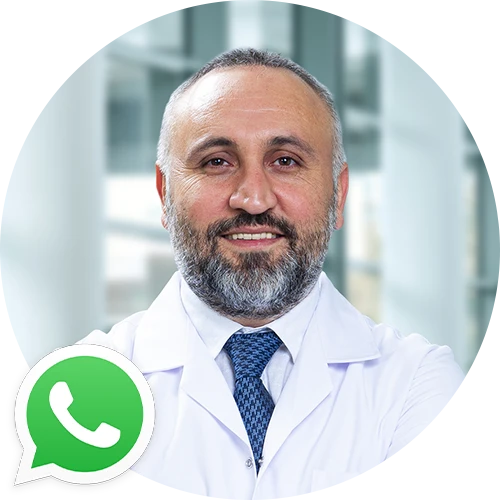
Liposuction in Turkey: A Comprehensive Overview
Liposuction in Turkey begins with an in-depth consultation and medical evaluation to determine the patient’s eligibility for the procedure. The surgery involves removing excess fat deposits from specific areas of the body, such as the abdomen, thighs, hips, arms, or neck, to enhance body contours and proportions. Advanced liposuction techniques, including tumescent, ultrasound-assisted, and laser-assisted methods, are used to achieve optimal results. The procedure is performed in state-of-the-art facilities by experienced plastic surgeons. Pre-operative tests ensure the patient’s health and readiness for surgery. After the procedure, patients receive detailed post-operative care, including follow-up visits, personalized recovery plans, and advice on maintaining their new body shape.
Liposuction Steps
1. Consultation and Evaluation
- Initial Consultation: Meeting with a plastic surgeon to discuss goals, expectations, and whether you’re a good candidate for liposuction.
- Medical Evaluation: The surgeon will evaluate your health status, medical history, and the areas of your body you want to improve.
- Discussion of Options: The surgeon explains the different liposuction techniques and recommends the best approach for your situation.
2. Preparation
- Pre-Operative Instructions: You may receive guidelines on diet, alcohol consumption, medications, and smoking cessation.
- Medications: Prescriptions for pain management and possibly antibiotics to prevent infection.
- Fasting: Instructions usually include not eating or drinking for a certain period before the surgery.
3. Anesthesia
- The type of anesthesia used (local, regional, or general) depends on the extent of the procedure and the areas being treated. This ensures comfort and painlessness during the surgery.
4. The Liposuction Procedure
- Incision: Small incisions are made near the area to be treated.
- Fat Liquefaction: Depending on the technique, a solution may be injected to liquefy the fat and minimize bleeding. Techniques vary (e.g., tumescent, ultrasound-assisted, laser-assisted).
- Fat Removal: A cannula connected to a vacuum is inserted through the incisions to suction out the fat.
- Contouring: The surgeon carefully removes the right amount of fat to achieve a more desirable contour in the treated area.
5. Closing the Incisions
- Incisions may be stitched closed or left open to drain excess fluids.
6. Recovery
- Immediate Post-Operative Care: You’ll be taken to a recovery area to be monitored. Compression garments are often applied to the treated areas to minimize swelling and support the healing process.
- Follow-Up Appointments: These are scheduled to monitor healing and progress.
- Activity Restriction: You’ll be advised to avoid strenuous activities for a specified period.
7. Results
- Swelling and bruising are common, but as they subside, the results of the liposuction will become more apparent.
- It may take several months for the swelling to fully diminish and the final results to be visible.
Plan Your Trip to Turkey for Liposuction
| Timeline | Activity | Recommendations |
|---|---|---|
| 6-12 Months Before | Initial Consultation | Consult with your local doctor and a Turkish clinic remotely to discuss eligibility and potential dates. |
| 3-6 Months Before | Medical Preparation | Begin necessary dietary and medical preparations as advised by the surgical team. |
| 1 Month Before | Travel Arrangements | Book flights and accommodation. Arrange for medical visas if necessary. |
| 2 Weeks Before | Final Checks | Finalize all personal and medical preparations. Confirm travel itinerary and local transport in Turkey. |
| Arrival in Turkey | Pre-Op Consultation | Meet with your surgical team in Turkey for a final pre-operative consultation. Undergo any last-minute tests. |
| Day of Surgery | Surgery | Proceed with the liposuction surgery as scheduled. |
| 1-2 Weeks Post-Surgery | Recovery in Turkey | Stay in Turkey for initial recovery and follow-up appointments. Follow all post-operative care guidelines. |
| Return Home | Post-Surgery Follow-up | Continue recovery at home with regular follow-ups remotely or with local healthcare providers. |

Need Help? Contact Us!
7/24 Obesity Help Desk
Liposuction Turkey Cost 2025
The cost of liposuction in Turkey varies widely depending on several factors, including the experience of the surgeon, the clinic’s reputation, the type of liposuction procedure, and the targeted body areas. Generally, liposuction prices can range from $1,800 to $5,000.
These costs often include anesthesia, facility fees, pre- and post-operative consultations, medications, and sometimes additional services like airport transfers and accommodation depending on the package chosen.
| Region | Average Liposuction Cost |
 Turkey Turkey | $1,800 – $5,000 or more |
 USA USA | $6,000 – $12,000 or more |
 Canada Canada | $6,000 – $12,000 or more |
 UK UK | £5,000 – £8,000 or more |
 Australia Australia | AUD 7,000 – AUD 15,000 or more |
 Germany Germany | €5,000 – €10,000 or more |
 France France | €5,000 – €10,000 or more |
Why does Liposuction Cost in Turkey Cheap?
- Exchange rate: Favorable exchange rates for foreign currencies relative to the Turkish lira can make procedures even cheaper for international patients.
- Standardized procedures: Many Turkish clinics employ standardized protocols and techniques for common procedures like Liposuction, achieving efficiency and cost savings.

Liposuction Before and After Photos
Submit your request for access to before and after photos to see actual patient results from our many cosmetic procedures and treatments at Dr. HE Clinic.
Liposuction Turkey Reviews
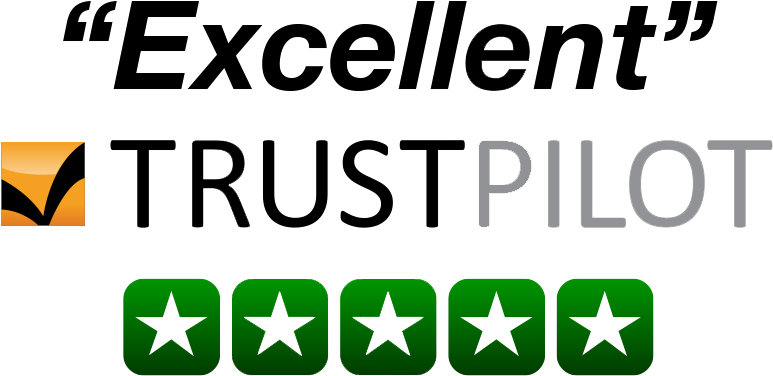

Posted on
Truspilot
Posted on
TruspilotIs it Safe To Have A Liposuction in Turkey?
Having liposuction in Turkey can be safe, provided that you thoroughly research and select reputable clinics and experienced, qualified surgeons. The safety of undergoing liposuction, like any surgical procedure, depends on several factors including the skill and experience of the surgeon, the quality of the medical facility, and adherence to post-operative care guidelines.
Turkey is a popular destination for medical tourism, including cosmetic surgery, due to its highly skilled surgeons, state-of-the-art medical facilities, and competitive pricing. Many Turkish surgeons are well-trained, often internationally, and possess extensive experience in performing liposuction and other cosmetic surgeries. Moreover, several clinics and hospitals in Turkey are accredited by international organizations, which helps to ensure they meet high standards of care and safety.
Frequently Asked Questions About Liposuction
Does Health Insurance Cover Liposuction?
In general, health insurance does not typically cover liposuction for cosmetic purposes. Liposuction is considered an elective or cosmetic procedure, as it is primarily performed to enhance body contours and is not typically performed to treat a medical condition.
However, there may be situations where health insurance coverage for liposuction can be considered. For example:
- Functional impairment: If liposuction is medically necessary to address functional impairment or correct a condition that significantly affects your daily functioning, such as lipedema or certain cases of gynecomastia (enlarged male breasts), insurance coverage may be possible. In these cases, documentation and evidence from a medical professional would be required to support the medical necessity.
- Reconstructive purposes: Liposuction performed as part of a reconstructive procedure, such as breast reconstruction following mastectomy or body contouring after massive weight loss, may be partially or fully covered by health insurance. The coverage will depend on the specific circumstances, policies of the insurance provider, and any pre-authorization requirements.
It’s important to review your health insurance policy and consult with your insurance provider to understand the specific coverage details and any potential exceptions. They can provide you with the most accurate information regarding the coverage for liposuction and any specific criteria that need to be met for it to be considered medically necessary.
Keep in mind that even if insurance coverage is available for certain cases, there may still be out-of-pocket costs, such as deductibles, co-pays, or coverage limitations. It’s advisable to thoroughly review your policy, consult with your insurance provider, and discuss the specifics with the medical professionals involved in your care to understand the financial implications of liposuction.
Why is Liposuction in Turkey Prices Lower Than in Other Countries?
Liposuction prices in Turkey are often lower compared to some other countries for several reasons:
- Lower operating costs: The overall cost of living and operating a medical facility in Turkey can be lower compared to certain Western countries. Factors such as lower labor costs, reduced administrative expenses, and more affordable medical supplies and equipment can contribute to lower overall operating costs for clinics and hospitals in Turkey. These cost savings can be passed on to patients, resulting in more competitive pricing.
- Currency exchange rates: Exchange rates between currencies can play a role in price differences. If the currency of your home country is stronger than the Turkish lira, you may find that the cost of liposuction in Turkey is relatively more affordable when converted to your currency.
- Intense competition: Turkey has a highly competitive medical tourism industry, with numerous clinics and hospitals vying for patients. This competition can drive down prices as facilities strive to attract more international patients by offering competitive rates.
- Government support and incentives: The Turkish government has actively supported the development of medical tourism in the country. It has implemented initiatives to attract international patients, including offering incentives to clinics and hospitals. These incentives can include tax breaks or financial support, which can help lower the overall costs for medical procedures.
While the lower prices in Turkey can be appealing, it’s crucial to consider various factors beyond cost when choosing a clinic or surgeon for liposuction. Prioritize the qualifications and experience of the surgeon, the reputation and quality of the facility, and the overall safety standards. Conduct thorough research, read patient reviews, and consider seeking recommendations from trusted sources to ensure a successful and safe liposuction procedure.
What is the required time for liposuction in Turkey?
The duration of a liposuction procedure in Turkey can vary depending on several factors, including the areas being treated, the amount of fat to be removed, the technique used, and the individual patient’s characteristics. Generally, the length of the procedure can range from one to several hours.
For smaller areas or limited fat removal, the procedure may take around one to two hours. However, if multiple areas or larger volumes of fat need to be addressed, the procedure can take longer, potentially up to four or more hours.
It’s important to note that the time mentioned here refers to the actual surgical procedure. Additional time should be accounted for pre-operative preparations, such as consultations, assessments, and marking the treatment areas, as well as post-operative monitoring and recovery.
During your consultation with a plastic surgeon in Turkey, they will evaluate your specific case and provide a more accurate estimate of the time required for your liposuction procedure. The surgeon will consider factors such as the extent of the procedure, your medical history, and any potential challenges or complexities involved.
It’s crucial to prioritize the quality and safety of the procedure over the duration. The surgeon should take the necessary time to ensure meticulous fat removal and achieve the desired results while prioritizing patient safety.
It’s advisable to discuss the expected duration, along with other details of the procedure, during your consultation with the plastic surgeon in Turkey. They will be able to provide you with more specific information based on your unique circumstances.
How Is Liposuction In Turkey Performed?
In Turkey, liposuction is typically performed by qualified plastic surgeons in specialized clinics or hospitals. The procedure generally follows a similar process, which involves the following steps:
Consultation and evaluation: Before the liposuction procedure, you will have a consultation with the plastic surgeon. They will evaluate your overall health, discuss your goals and expectations, and examine the areas to be treated. They will also explain the procedure, potential risks, and address any concerns you may have.
Anesthesia: Liposuction can be performed under local anesthesia with sedation or general anesthesia, depending on the extent of the procedure and your surgeon’s recommendation. General anesthesia will keep you unconscious throughout the surgery, while local anesthesia allows you to remain awake but numbs the treatment area.
Incisions: Once you are properly anesthetized, the surgeon will create small incisions in strategic locations near the treatment area. These incisions are typically small and placed in inconspicuous areas to minimize visible scarring.
Tumescent technique or alternative methods: The surgeon will inject a tumescent solution into the treatment area. This solution contains a local anesthetic to numb the area, a vasoconstrictor to minimize bleeding, and a saline solution to facilitate fat removal. In some cases, alternative methods such as laser-assisted or ultrasound-assisted liposuction may be used to help break down fat cells before removal.
Fat removal: Using a thin tube called a cannula, the surgeon will carefully and skillfully remove the excess fat deposits. The cannula is inserted through the incisions and moved back and forth to dislodge and suction out the fat cells. The surgeon will employ various techniques to achieve the desired contour and shape.
Closing incisions: Once the fat removal is complete, the surgeon will close the incisions with sutures or use adhesive strips or surgical tape. They may also place a compression garment over the treated area to minimize swelling and aid in the healing process.
Recovery and follow-up: After the procedure, you will be moved to a recovery area, where you will be monitored for a brief period. You may experience some swelling, bruising, and discomfort, which can be managed with prescribed medications. It’s important to follow the post-operative instructions provided by your surgeon, which may include wearing compression garments, taking antibiotics, and scheduling follow-up visits to monitor your progress.
It’s crucial to select a reputable clinic or hospital and an experienced plastic surgeon in Turkey to ensure a safe and successful liposuction procedure. The specific details of the procedure may vary depending on the surgeon’s techniques and the individual patient’s needs. Therefore, it’s best to consult with a qualified professional who can provide personalized guidance based on your unique circumstances.
Is Liposuction Painful?
Liposuction is a surgical procedure, and like any surgical procedure, there can be discomfort and pain associated with it. However, the level of pain experienced varies from person to person and can be influenced by factors such as the individual’s pain threshold, the extent of the procedure, the technique used, and the skill of the surgeon.
Consultation and evaluation: Before the liposuction procedure, you will have a consultation with the plastic surgeon. They will evaluate your overall health, discuss your goals and expectations, and examine the areas to be treated. They will also explain the procedure, potential risks, and address any concerns you may have.
Anesthesia: Liposuction can be performed under local anesthesia with sedation or general anesthesia, depending on the extent of the procedure and your surgeon’s recommendation. General anesthesia will keep you unconscious throughout the surgery, while local anesthesia allows you to remain awake but numbs the treatment area.
Incisions: Once you are properly anesthetized, the surgeon will create small incisions in strategic locations near the treatment area. These incisions are typically small and placed in inconspicuous areas to minimize visible scarring.
Tumescent technique or alternative methods: The surgeon will inject a tumescent solution into the treatment area. This solution contains a local anesthetic to numb the area, a vasoconstrictor to minimize bleeding, and a saline solution to facilitate fat removal. In some cases, alternative methods such as laser-assisted or ultrasound-assisted liposuction may be used to help break down fat cells before removal.
Fat removal: Using a thin tube called a cannula, the surgeon will carefully and skillfully remove the excess fat deposits. The cannula is inserted through the incisions and moved back and forth to dislodge and suction out the fat cells. The surgeon will employ various techniques to achieve the desired contour and shape.
Closing incisions: Once the fat removal is complete, the surgeon will close the incisions with sutures or use adhesive strips or surgical tape. They may also place a compression garment over the treated area to minimize swelling and aid in the healing process.
Recovery and follow-up: After the procedure, you will be moved to a recovery area, where you will be monitored for a brief period. You may experience some swelling, bruising, and discomfort, which can be managed with prescribed medications. It’s important to follow the post-operative instructions provided by your surgeon, which may include wearing compression garments, taking antibiotics, and scheduling follow-up visits to monitor your progress.
It’s crucial to select a reputable clinic or hospital and an experienced plastic surgeon in Turkey to ensure a safe and successful liposuction procedure. The specific details of the procedure may vary depending on the surgeon’s techniques and the individual patient’s needs. Therefore, it’s best to consult with a qualified professional who can provide personalized guidance based on your unique circumstances.
Is there a scar after the Liposuction?
Yes, there will be small scars after liposuction, as it is a surgical procedure that involves making incisions to access and remove the excess fat. However, the size and visibility of the scars are generally quite minimal and often fade over time. Here are some key points to understand about scarring after liposuction:
Consultation and evaluation: Before the liposuction procedure, you will have a consultation with the plastic surgeon. They will evaluate your overall health, discuss your goals and expectations, and examine the areas to be treated. They will also explain the procedure, potential risks, and address any concerns you may have.
Anesthesia: Liposuction can be performed under local anesthesia with sedation or general anesthesia, depending on the extent of the procedure and your surgeon’s recommendation. General anesthesia will keep you unconscious throughout the surgery, while local anesthesia allows you to remain awake but numbs the treatment area.
Incisions: Once you are properly anesthetized, the surgeon will create small incisions in strategic locations near the treatment area. These incisions are typically small and placed in inconspicuous areas to minimize visible scarring.
Tumescent technique or alternative methods: The surgeon will inject a tumescent solution into the treatment area. This solution contains a local anesthetic to numb the area, a vasoconstrictor to minimize bleeding, and a saline solution to facilitate fat removal. In some cases, alternative methods such as laser-assisted or ultrasound-assisted liposuction may be used to help break down fat cells before removal.
Fat removal: Using a thin tube called a cannula, the surgeon will carefully and skillfully remove the excess fat deposits. The cannula is inserted through the incisions and moved back and forth to dislodge and suction out the fat cells. The surgeon will employ various techniques to achieve the desired contour and shape.
Closing incisions: Once the fat removal is complete, the surgeon will close the incisions with sutures or use adhesive strips or surgical tape. They may also place a compression garment over the treated area to minimize swelling and aid in the healing process.
Recovery and follow-up: After the procedure, you will be moved to a recovery area, where you will be monitored for a brief period. You may experience some swelling, bruising, and discomfort, which can be managed with prescribed medications. It’s important to follow the post-operative instructions provided by your surgeon, which may include wearing compression garments, taking antibiotics, and scheduling follow-up visits to monitor your progress.
It’s crucial to select a reputable clinic or hospital and an experienced plastic surgeon in Turkey to ensure a safe and successful liposuction procedure. The specific details of the procedure may vary depending on the surgeon’s techniques and the individual patient’s needs. Therefore, it’s best to consult with a qualified professional who can provide personalized guidance based on your unique circumstances.
QUALITY CERTIFICATES
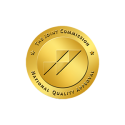

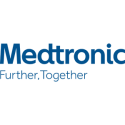
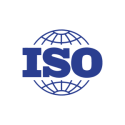






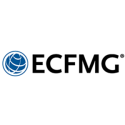





Posted on
Truspilot